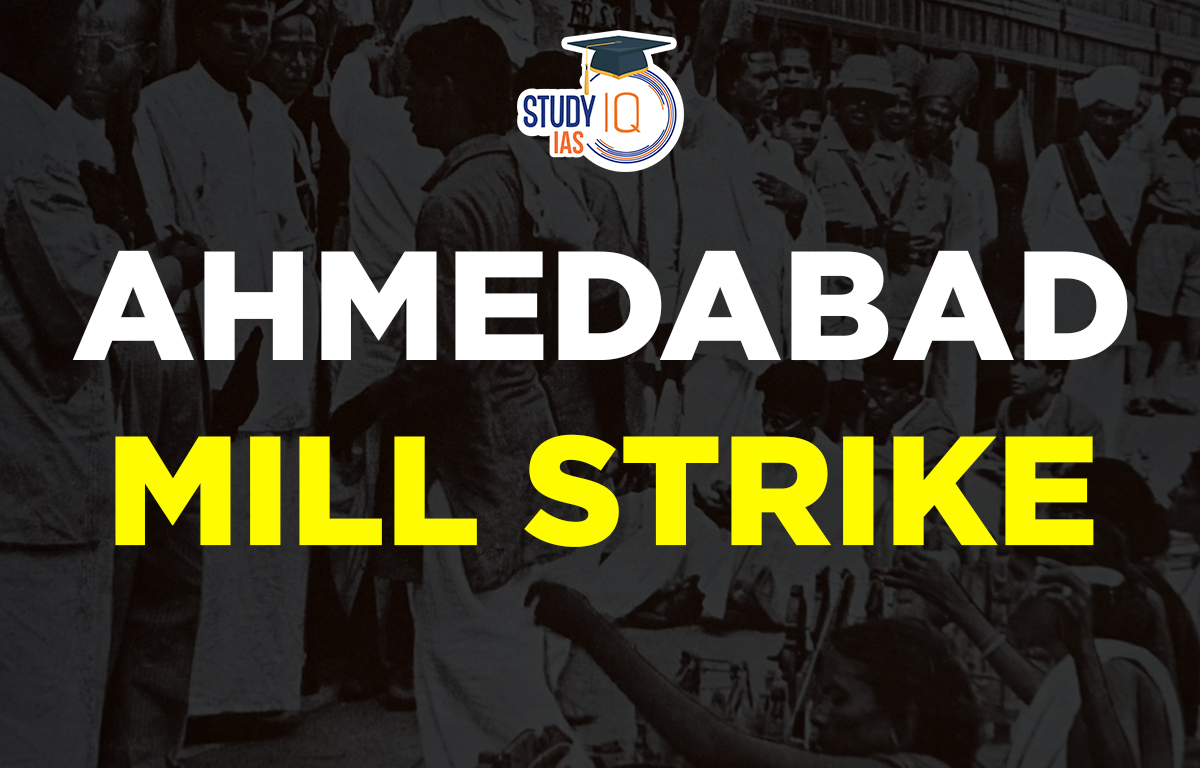Table of Contents
Ahmedabad Mill Strike
The Ahmedabad Mill Strike is regarded as Mahatma Gandhi’s first starvation strike. The textile mill employees in Ahmedabad went on strike in 1918 to demand economic justice after the mill owners stopped giving out plague bonuses. Gandhi stepped in to mediate this conflict between millowners and employees in Ahmedabad. He started a life-defying fast in order to coerce a settlement.
Additionally, he stood with the Gujarati Khaira peasants in their struggle against the collection of land taxes after their harvests failed. Sardar Vallabhbhai Patel left his lucrative legal practice at this time to back Gandhi. The characteristics of the Ahmedabad Mill Strike will be covered in this article and will be useful for UPSC exam preparation.
Read More: Indian Association of Calcutta
Ahmedabad Mill Strike History
The mill owners wanted to take the bonus in the dispute between the employees and owners of the Ahmedabad mill. In order to deal with wartime inflation brought on by Britain’s participation in World War I, which doubled the prices of food grains, clothing, and other necessities, workers requested a 50% wage increase. Only a 20% pay raise was being offered by the mill proprietors. The workers started a walkout.
The mill owners’ relations with the workers deteriorated, with the striking workers being arbitrarily dismissed and the mill owners choosing to bring in weavers from Bombay. In their pursuit of justice, the mill workers looked to Anusuya Sarabhai for support. Gandhi stepped in to mediate a disagreement between Ahmedabad cotton mill owners and employees in March 1918 regarding the end of the plague bonus.
Read More: Indian National Movement
Ahmedabad Mill Strike and Gandhi’s Advice
Gandhi suggested that the employees go on strike and demand a 35% pay raise. He insisted that during the strike, the employees shouldn’t resort to violence against the employers. To increase the workers’ resolve to continue the strike, he underwent a fast until death. This increased pressure on the mill owners, who gave in on the fourth day and agreed to raise wages for the employees by 35%.
Read More: Vernacular Press Act
Ahmedabad Mill Strike Reasons
Anusuya Sarabhai, a social worker and the sister of Ambalal Sarabhai, one of the mill owners and president of the Ahmedabad Mill Owners Association (founded in 1891 to develop the textile industry in Ahmedabad), was asked for assistance in fighting for justice. Anusuya Behn approached Gandhi, whom the mill owners and workers respected, and asked him to intervene and help resolve the impasse between the workers and the employers.
Gandhi supported the interests of the workers despite being friends with Ambalal. Gandhi suggested that instead of asking for a 50% pay rise, workers should organize a strike and demand a 35% pay increase. Gandhi advised the workers to keep up their nonviolent protest. After negotiations with the mill owners fell through, he started his first fast until death to strengthen the workers’ determination.
The fast did, however, exert pressure on the mill owners, who ultimately consented to send the case to a tribunal. The walkout has been suspended. In the end, the tribunal increased the employees’ pay by 35%.
Read More: Ilbert Bill
Ahmedabad Mill Strike UPSC
Gandhi was introduced to the masses through these encounters, and he actively promoted their interests for the remainder of his life. He was actually the first nationalist leader in India to relate his life and manner of life to that of common people. He eventually came to stand in for nationalist India, impoverished India, and rebellious India. For UPSC exam preparation, read the full article about the Ahmedabad Mill Strike.
Read More: Surat Split


 Revival of Machilipatnam Port in Andhra ...
Revival of Machilipatnam Port in Andhra ...
 Nagari Pracharini Sabha Revival: Backgro...
Nagari Pracharini Sabha Revival: Backgro...
 Ryotwari System in India, Features, Impa...
Ryotwari System in India, Features, Impa...





















